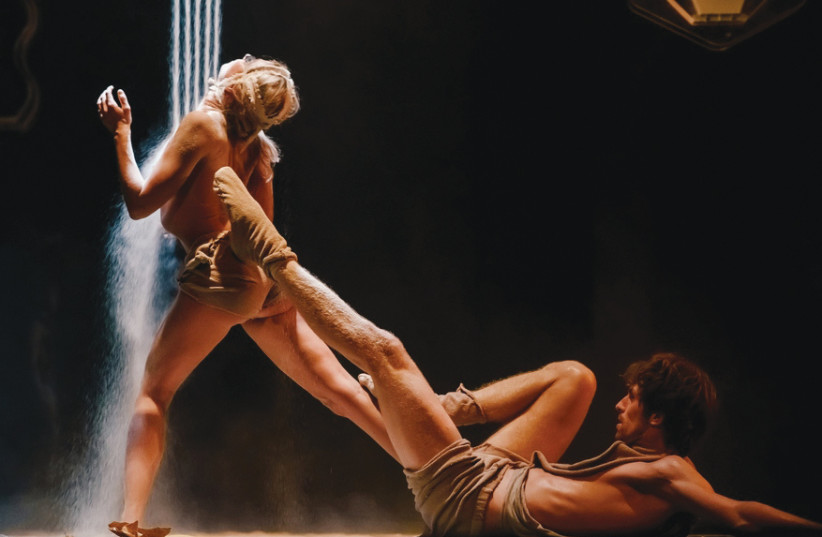Provincial Dance Company: Impressive visuals, shallow sand dunes
Once more, the stage was filled with hanging props of sand filled thin transparent plastic containers shaped like ancient jugs.

THE PROVINCIAL Dances Company in action.
(photo credit: Courtesy)
PROVINCIAL DANCES COMPANY
Yekaterinburg, Russia
Suzanne Dellal Center, Tel Aviv
February 25
Within the framework of M.Art festival of Russian arts, Provincial Dances Company’s program attracted particular attention.
The company, founded in 1990, offered two creations by Tatiana Baganova, both are renditions of outstanding creations of the 20ieth century. Obviously, Baganova aimed high.
The evening opened with “Les Noces” (The Wedding) originally choreographed in 1923 by Bronislava Nijinska, the only female who choreographed for Serge Diaghilev of Ballets Russes, and the sister of the legendary dancer Vaslav Nijinsky. The dance is based on traditional peasant wedding ceremony. This masterpiece, set to ultra progressive music of Stravinsky is a true milestone of modern art for its original architectural movement language.
Baganova, choreographed her interpretation 20 years ago and kept the basic narrative as a thin guide line, yet felt free to deviate, which allowed her to assemble movement manifestations of varied sources, in order to create dance statement in her own voice. Her tactics worked for her up to a point. She ended in producing theatrical dance enriched by invested visual support of opulent set, and too many props- some, like heavy metal chains which never been used, while others, served their purpose. It started with a diagonal wedding bed turned altar and ended in intense ritual of cutting down the bride’s thick long braid, her symbolic virginity.
Among the choreographic attempts – not always successful – to establish solid contemporary statement, Baganova carefully wove variation of dance lines that crossed backstage and referred to the peasant dances, that a century earlier, were a part of the original production, and added a sensitive touch. The company’s 10 dancers looked good and could’ve used a bit larger stage.
The second piece, “Sepia,” missed the mark with its presumptuous ties to the Japanese author and thinker Kobo Abe, author of the story Woman In The Dunes (1962), which was brilliantly transformed into a film two years later by Avant Guard Japanese artist and leading film director Hiroshe Teshigawara.
“Sepia” (brown) and the high art of Woman In The Dunes had only sand as a common component, and that was hardly enough.
While the intense surreal story that reached its artistic peaks in the film through minimalism, cohesive precision chiseled with surgical blade, “Sepia” is stylistically muddled, with congested elements that don’t give a chance to dig deep. Once more, the stage was filled with hanging props of sand filled thin transparent plastic containers shaped like ancient jugs.
On the right side, three male dancers clad in sumo-like skimpy cloth serve as an invigorating promise which soon dispersed, not before they opened a valve that allowed sand to stream on them. On the left, few dancers strived to get out of a pile of crumpled brown paper, as they grabbed the torn paper and disappeared. Action without context comes cheap.
We know that if you bring a gun on stage in the first act, it should better fire on the third. Meaning, don’t waste our time. Yet, there is a lot of action In “Sepia,” some of it even looks good, but in the end, “Sepia” left behind impressive visuals in shallow sand dunes.
Yekaterinburg, Russia
Suzanne Dellal Center, Tel Aviv
February 25
Within the framework of M.Art festival of Russian arts, Provincial Dances Company’s program attracted particular attention.







.jpeg)
Comments
Post a Comment